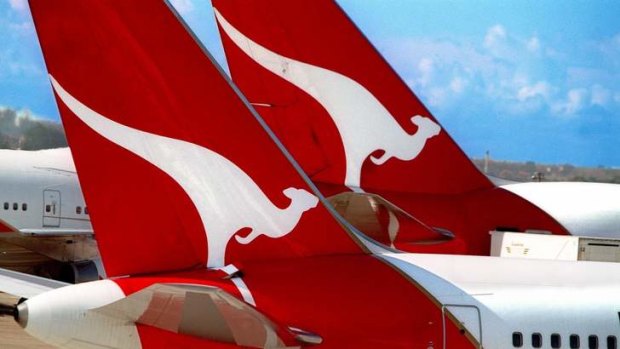This was published 9 years ago
Will new Qantas surcharges drive more customers away?

Qantas have introduced surcharges for flight tickets at peak times.Credit: Phil Carrick
The science of pricing air fares charged to consumers, which the airline industry has refined under the banner of “yield management”, is a world away from the guesswork that was used before computers took over the grunt work.
It’s a gripe among punters that they can be sitting next to someone who paid three times more or three times less for the seat they’re sitting in – all because, in some airline backroom, fares have been divided into different “buckets” that can be purchased with different restrictions.
Generally speaking, the fewer the restrictions, the higher the fare, with business travellers willing to pay the most for flexibility and frills that the leisure traveller doesn’t want or need.
In yield management systems, fares rise and fall according to the time of day, day of the week and the week of the year according to demand that’s predictable according to reams of historically observed data.
So it does seem odd that, when it is losing money and collapsing its market share to attempt to get back in the black, Qantas International should be overriding its yield management system and signalling to its customers (and its competitors) that it will be levying fixed surcharges for Australian departures according to the season and time of week.
The first target was Qantas’s highly successful non-stop service from Sydney to Dallas, Texas, that enables customers to by-pass the Los Angeles hub and plug into partner American Airlines’ Dallas hub which saves time for customers flying on to US east coast destinations like New York and Miami.
The DFW service switches from Boeing 747-400s to Airbus A380s in September.
A Qantas spokesman says the surcharge for the SYD-DFW service - $50 one way in economy, $100 in premium economy and $200 in business – is standard airline industry practice and is “often applied on services into and out of Australia”.
Known as Q Surcharge, the DFW impost was introduced in April and was extended last week to most other routes, ranging up to $200 one way from Australia to Europe, Africa and the Middle East for outbound departures only on both Qantas and Emirates services.
It includes a $25 surcharge for Qantas economy passengers on services from Australia to Hong Kong, Shanghai and Manila and a $50 surcharge from Sydney to Honolulu.
On top of that, from the weekend just past Qantas-Emirates customers leaving the country on many popular weekend services began paying a $25 surcharge.
The new international weekend travel surcharge will apply to outbound travel from Australia on Fridays and Saturdays on all routes across the Emirates-Qantas network, except Singapore, Thailand and Kuala Lumpur.
The surcharge will apply to flights to Thailand on Saturday and Sunday for Qantas-operated flights and Fridays and Saturdays for those operated by Emirates.
It’s part of a general belt-tightening at Qantas over the past few months.
Qantas announced on April 30 that, “with passengers increasingly having the choice of less expensive and sale fares”, the airline would no longer offer a discount on its full fares to seniors and children, in line with other domestic carriers.
I must admit I was surprised to learn that those discounts were still in the system.
Most of the time, anyone who can use a home computer system has access to fares that are far cheaper.
“Last year, these concession fares only made up a single digit percentage of Qantas’ overall bookings, chiefly because customers choose cheaper sale fares,” the airline says.
Qantas points out that average domestic air fares in Australia have dropped by almost 22 per cent in the past decade – along with Qantas’s market share.
Qantas had a 63.8 per cent share of domestic capacity in March, short of its 65 per cent target, but that is nothing compared with what has happened internationally.
In the latest month for which government figures are available, the Qantas group’s international market share (for Qantas and its subsidiary Jetstar) had fallen to 24.5 per cent, down from 26.1 per cent in February last year and 29.8 per cent in a decade ago in 2004 (when Jetstar was a recently invented domestic carrier only).
A decade earlier than that in 1994, the figure was 40.7 per cent.
As any airline executive will tell you, market share is worse than worthless if you lose your shirt chasing it.
But doing the opposite – sacrificing market share – while it may restore profitability also risks shedding the critical mass essential to keep costs low.
It is in this scenario the Qantas risks handing business to its competitors by advertising the fact that it is charging fixed penalties for its customers at times of high demand.
Have Qantas’s new surcharges put you off? Will you use them anyway because of the product it offers?
Sign up for the Traveller Deals newsletter
Get exclusive travel deals delivered straight to your inbox. Sign up now.